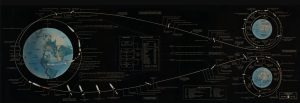Very many people who practice Lean continuous improvement efforts are unaware of the science that governs operations performance. There is a science behind Lean whether one is discussing Lean Manufacturing, Lean Office, Lean Healthcare, Lean Construction, or any version of Lean.
The bad news is that this science is either ignored or misunderstood in many Lean initiatives due, in large part, to the unscientific origin of the Toyota Production System (TPS), the precursor of Lean. The result is a high failure rate of Lean initiatives, IndustryWeek reported a 2% success rate in a 2007 survey of manufacturing companies. In a February 2, 2023 article, the Wall Street Journal reported that 99.5% of Megaprojects (value greater than $1 billion), are “over budget, over time, under benefits, over and over again.” This is after two decades of efforts at applying Lean initiatives in construction. Over two hundred years since the beginning of the industrial revolution, frequent failure on cost and service commonly occur in traditional manufacturing and services.
The good news is that operations science is fairly easy to understand and can be blended with existing efforts to improve and accelerate results. Even better, establishing a common understanding of operations science reduces organizational chaos and improves peoples’ ability to work together, more on that later.
First, what we mean by science. Science is the process of making an observation (a hypothesis) about the behavior of nature, and then relentlessly testing the hypothesis to see if it holds up as a predictive law. If the hypothesis can not be rejected, it may be held up provisionally as a law with the understanding that some future observation may refute it. Mathematics is not the same as science but math is used to model and test scientific observations.
The picture at the beginning of this post is from a YouTube video of a talk given by Taiichi Ohno on November 29, 1984. In the talk, Ohno describes a visit with Eli Goldratt, the Israeli physicist responsible for inventing the Theory of Constraints. Ohno is either being extremely modest or doesn’t consider himself much of a scholar, or both, as he states he, “cannot compete with a scholar in theory.” This just goes to show that not all geniuses are scholars.
The point is not to diminish Ohno, he was a manufacturing genius. The point is that he did not state any scientific basis for the TPS. The transformation of Toyota production occurred over the course of about 40 years by trial and error. In the video, he relates how he achieves results by telling managers working on improving a process to reduce inventory by half. When that is accomplished, he assigns the same goal again and continues to repeat the process. Why should it be a reduction of 50%? Why not 25% or 75%?
Ohno states, “The essence of the Toyota Production System is found in saying, ‘Can we realistically reduce one more? and after that, one more.’” This is not scientific understanding and control of operations behavior.
In another record of conversations between Ohno and Goldratt, Ohno stated, “I had this idea of a fast, even-flowing river in which there are no dams that slowed the flow or rapids that sped it up…It was to be a river system where ideally the only materials flowing were those for cars that customers were now buying. There would be no unneeded parts, yet we would always have the parts that were needed.” [1]

This is not conclusive evidence that Ohno had no scientific description of TPS, maybe he was just hiding it. If this description exists, it has not been publicly stated in the 90 years since TPS’ beginning. Even today, “Roots of the Toyota Production System” on Toyota’s website states the TPS “evolved through many years of trial and error to improve efficiency based on the Just-in-Time concept.”
The Toyota description of the evolution of TPS is different from a scientific understanding of operations behavior where system performance and the effects of changes to the system are predictable. As an analogy, the Toyota approach would be like launching a rocket from Earth and traveling to the moon navigating by sight while making constant flightpath corrections as the moon appears closer or farther away. Indeed, adjustments are made as today’s rockets travel to the moon but orbital mechanics as a science is well understood so course adjustments are based on the predetermined, optimal path.
See below for example, NASA’s illustration of the Apollo 11 lunar landing mission’s flight plan. Apollo 11: “Come in Houston. We appear to have reduced the distance between us and the moon by 50%. Please advise.” Houston Control: “Roger that Apollo 11. Direct that you reduce the distance another 50%.” Said no one. While the detail in the flight plan illustration is hard to see, it is obvious that there is extensive detail. It was all determined prior to launch and achieved spectacular results.

Ohno and his associates accomplished the transformation of Toyota production over the course of about 40 years by trial and error. Most organizations don’t have a resident operations genius and 40 years to get results.
An avalanche of Toyota imitation followed the publication of “The Machine That Changed The World” in 1980 where the TPS was lionized and its approach first described as “lean manufacturing.” That imitation focused almost exclusively on applying the methods, such as kaizen, jidoka, and just-in-time, that Toyota had perfected. The imitators did not often, or at all, consider what the science might be behind the TPS’s success. As a result, for decades, there has been much confusion and chaos caused in operations around the world through failed or muddled Lean initiatives. Lean has taken on a life of its own with a general promise of improved productivity, often lacking any connection to TPS.
Operations science provides a way to end this confusion, unify peoples’ efforts, and achieve fast results. Consulting and new software are not required. Operations Science is the study of transformation of resources to create and distribute goods and services. Operations Science focuses on the interaction between demand and transformation and the variability associated with either or both.
Operations Science also describes the set of buffers (inventory, capacity, and time) required to synchronize demand with transformation. For further discussion see What is Operations Science? There are three equations and three performance curves which are fundamental building blocks of all of operations behavior. The three equations are
- Little’s Law
- VUT (Kingman’s equation)
- Variance of Replenishment Time Demand
The three performance curves are shown here

The objective of this article is to inform the reader of the existence of operations science and encourage its use to clarify, accelerate and sustain success in Lean or other operations management initiatives. There is plenty of documentation of details under Resources. Operations science is very valuable in that it unites efforts of groups of people since the science is hard to dispute. As an example, it would not be productive for someone to attempt to contribute to a meeting by arguing that the law of gravity is not valid. It is productive when everyone understands the implications of the law of gravity and then works together to determine next steps given those constraints.
The application of Lean methods to operations can be powerful, however results are unpredictable. Operations science provides a time-tested foundation to successfully guide Lean and other operations management initiatives.
Inspire and energize your employees and sustain your operations success over the long term with a common language and operations management grounded in operations science. No software or consulting required. Contact us at the Operations Science Institute and get started on the road to long-term success.
[1] Reza M. Pirasteh and Robert E. Fox, Profitability With No Boundaries: Optimizing TOC, Lean, Six Sigma Results. (Milwaukee: American Society of Quality, Quality Press, 2011), 97.



